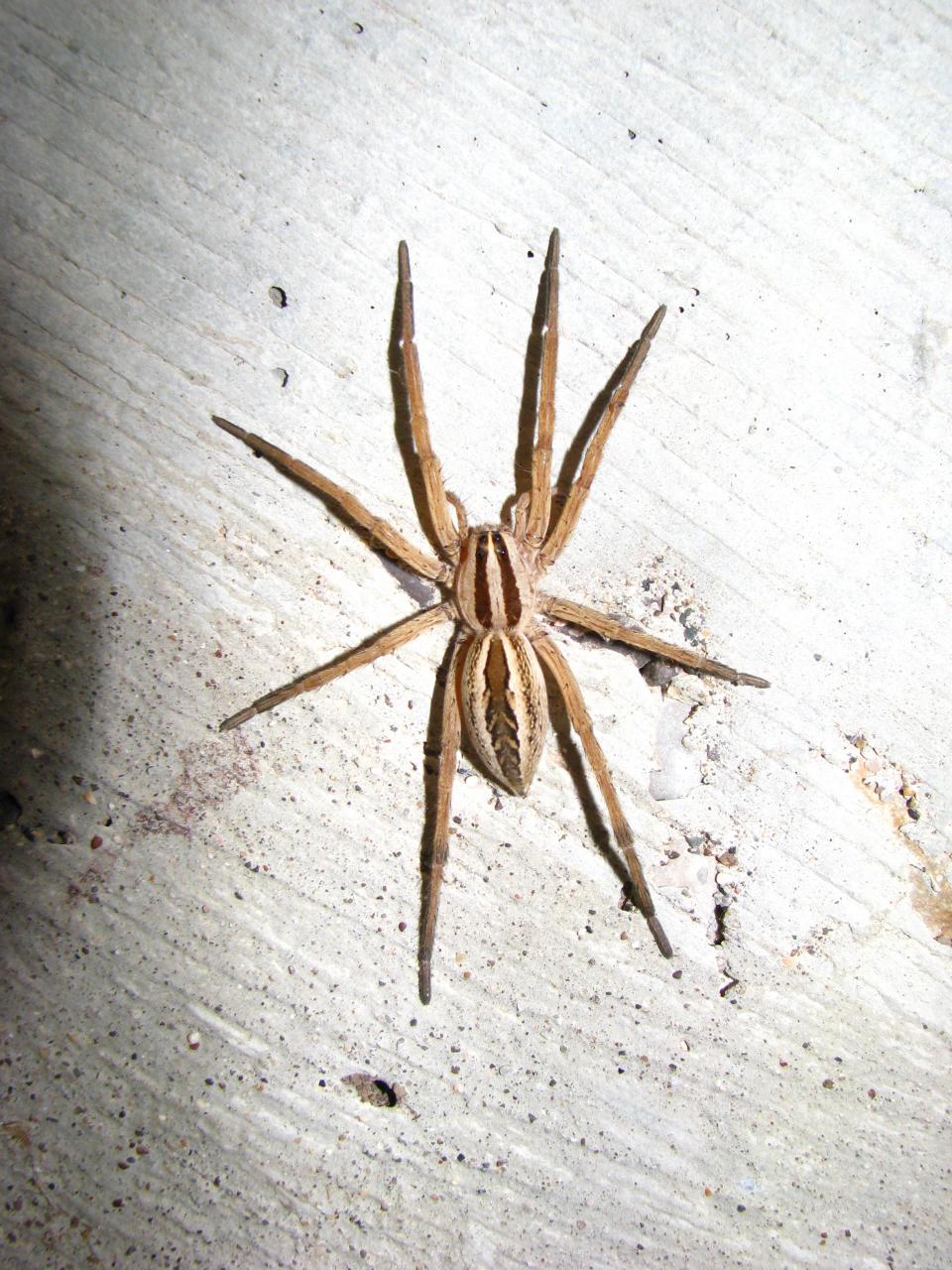Everything to know about the Wolf Spider
Think that you have a large extended family? Well, you have nothing on a group of creepy-crawlies known as Wolf Spiders.
Wolf Spiders are a diverse group of spiders that can be found worldwide, save for the coldest of the Arctic and Antarctic regions. Taxonomically speaking, this family has more than 100 genera and nearly 2,300 species. In Texas, this family is represented by 15 genera and 64 species, while the specimens that are the best known in this area are the nine species that belong to the genus Hogna.

Wolf Spiders, like other species of arachnids, have a body that consists of two parts (the cephalothorax and the abdomen) as well as the customary eight legs. The dorsal coloration varies from light to dark, but generally is a tan to light brown coloration. Along the cephalothorax are two darker brown lines that run lengthwise to the abdomen, which can be unpatterned or adorned with two light lines. Females are slightly larger in size than males, reaching a total body length of about one and one-half inch and a leg span of almost three inches.
There are two characteristics that make these spiders distinguishable from other native species. The first characteristic is the coloration of the underside. Wolf Spiders have a solid black underside that is set apart from the tan to brownish upper side.
The other characteristic is the arrangement of the eight eyes. These eight eyes are arranged in three rows – four small eyes on the bottom, two large eyes on the middle row, and two medium sized eyes on the top. It is with these eight eyes that they rely on excellent eyesight to hunt for food as well as for scanning their surroundings for predators. These eight eyes also reflect light at night, and many specimens are seen on roadways during the summer months. They appear as little green flashes on the road as their eyes reflect the automobile headlights.
Wolf Spiders are also unique in the way that they care for their young. Unlike most other spiders, which will lay their egg sacs in their intricate web, this group of spiders will carry their egg sac with them on the underside of their abdomen. This egg sac is attached to the spinnerets on the end of the abdomen, and although it can appear bulky, it does not prohibit the spider from its regular course of hunting its food. Upon hatching, the young spiderlings, which can number in the hundreds, will crawl unto the back of the female, and will remain with her for a short period of time.
While at first glance they may seem rather non-descript, the main purpose of their dull coloration is camouflage. This camouflage serves two purposes, protection from predators and the assistance in ambushing its prey. Wolf Spiders are quick and agile hunters, feeding on almost any invertebrate smaller than they are. They are an important predator on many harmful insects, and people would be wise to allow them their space to do what they do. They are habitat generalists, making the most of every opportune area that supports any sort of insect population, including human dwellings.
Wolf Spiders, like all other spiders, possess venom glands and have a toxic bite. However, like most other spiders, the bite from one of these creatures is of little consequence as the venom is rather weak.
Michael Price is owner of Wild About Texas, an educational company that specializes in venomous animal safety training, environmental consultations and ecotourism. Contact him at wildabouttexas@gmail.com.
This article originally appeared on San Angelo Standard-Times: Everything to know about the Wolf Spider

